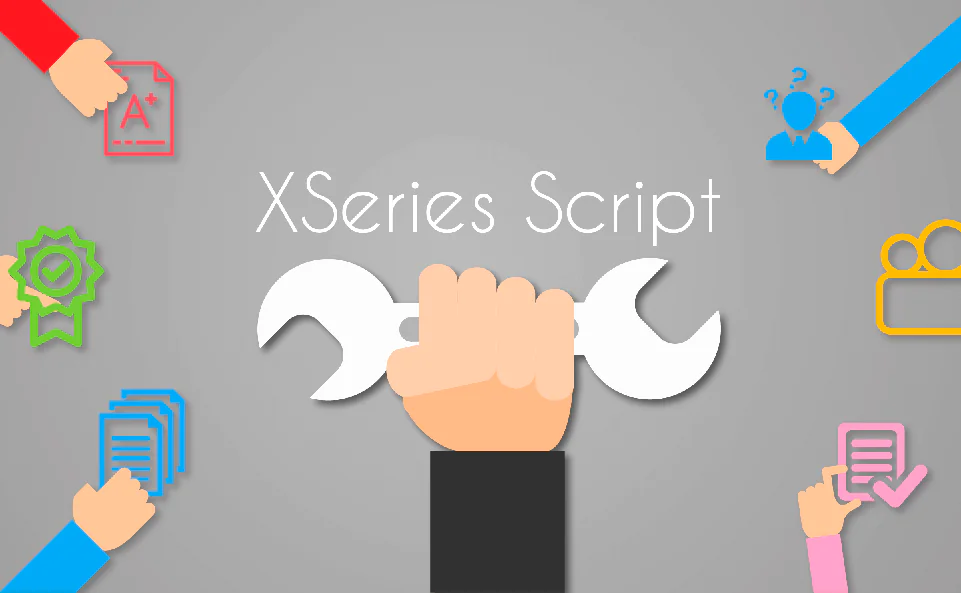Since developers of online courses always face the challenge of creating and/or selecting high-quality content to meet these demands or in such situations, open educational resources can come in quite handy. Also, they are one of the most diverse and freely available resources. However, if you are not aware of using this platform correctly, you may find it difficult to search for the best match. This happens because in most cases OERs are unorganized on the Web.
Still, to overcome this particular issue and to assist you in taking the best advantage of OER platforms, here we will be sharing the five great open education resources that would help you in designing exceptional material with the help of the quality content available on these resources.
But before we dig further into the details of these great online educational resources, let just have a closer look at the OER itself and how it works!
What is OER?
Open educational resources or OERs are learning and teaching materials that are shared online and for everyone openly. This material can be used for many purposes which may include translating, reusing, or maybe modifying because the creator of contents has already granted the permission to do so via open licensing.
Thus, open educational resources are the learning material and teaching that is available either under open licensing or in the public domain. All the open educational resources are created and contributed by curriculum designers, educators, school districts and curriculum partners. Moreover, all of them are ‘mashable’ which indicates that teacher can easily choose resources (for example; animations, videos, lesson plans, photos etc), combine them or tweak them with some other resources, to develop their personal custom teaching tools. Not to mention, a lot of OERs are already mapped to standards.
The Uses of Open Education Resources
Developers, who use OERs, usually include these resources as ad-hoc or formal addition to an existing program or curriculum. For instance, instructors sometimes use an online open lesson plan to include an enrichment activity for learners or may provide an extra practice material for the learner, struggling with the course or a particular concept.
Also, an instructor of a limited science lab may incorporate online open videos to create a clear and comprehensive demonstration of a complex experiment. Some online learning solutions have curated a huge collection of these materials into one digital library, making it easier for instructors to search specific material or lesson plans to incorporate into their online courses.
Similarly, many learning platforms are clearly shifting away from the expensive and conventional textbooks way of learning and instead incorporating digital curriculum, created of all the open resources. While this digital curriculum can be updated as soon as the new material comes in, this might require more commitment on behalf of teachers to catalog and review material.
The Benefits of Using Open Educational Resources
We have discussed the OER and its numerous uses and we have understood that there are a variety of online educational resources for us to adopt. However, if you are a developer of an online course then one of the first thing that would come to your mind is that:
Why would online educational resources matter to you? And what distinctive benefit can you get out of it?
The promotion and even development of OERs are sometimes motivated by creating a desire to cut down the commodification of knowledge and to offer an enhanced or alternative educational paradigm. So, let us just have a look at some of the many benefits of adopting online educational resources for custom eLearning development.
- An educational platform open to everyone
-
Affordable learning, ideally free of cost
-
Before even signing up, learners can try out the course
-
Study times get flexible and not restricted to semester calendars or weekly timetables
-
Learners can learn and work in accordance with their pace
-
Accessible from anywhere and have no limited access to college or school
-
Provide access to a variety of study materials
-
A lot of intellectual capital is offered to be reused.
While these are just some of a great many benefits of using online educational resources in learning, OER is a major component in making open education achievable.
Let’s have a look at some of its benefits from the faculty’s and students’ perspective.
Benefits of OERs for faculty:
Flexibility in curriculum
A faculty or educators, opting for OERs, can easily modify the resources in order to make them exceptionally suitable to what they need in the classroom and for their learners. With an open practice, educators are able to adjust their content, pedagogies, an approach – based on their learners. Moreover, teachers can also compare their own teaching materials with that of other teachers’ and that too, all over the world.
Simplification of local adaptation
The increasing pool of OER not only offers freedom in selecting course material but also creates opportunities for new resources that can be adapted to fit the local context – both in terms of culture and learning needs. Also, this is achievable without necessitating lengthy copyright negotiations or duplicating content development.
Benefits of OER for students:
No additional cost
According to Director of Global Learning at Creative Commons – Cable Green, two third of the students in the United States, don’t buy all the educational resources that have been assigned to their class. However, by using free OERs instead of traditional textbooks or course packs can substantially reduce the cost of course materials for students. Since OERs are open, they allow students to always have unlimited access to learning content.
Improves student learning comprehension
Considering the context of open educational practice, open educational resources can increase the effectiveness of online learning.
- Students who preferred the courses, which were based on OER, had better grades and lower failure, more frequently, than their counterparts who did not take up the course based on OER. Moreover, the students agreed that the digital OER were more useful and knowledgeable than the conventional textbooks and that they will always prefer to learn by using the digital technology or digital content – OER.
- OER is an opportunity to test out course material before enrolling and also the comparison with other similar courses.
- Through open educational resources, prospective students can sample study at a particular institution or better understand the nature of further or higher education in particular disciplines. This may help them to make better study choices and to succeed once enrolled.
Open Platforms and Open Educational Resources Examples
When you aim at creating an online course platform based on open educational resources, you can have access to various open resources, accessible by the general public.
There are many platforms which provide extensively, the latest and quality content material for you to develop a comprehensive and knowledge-based online course.
Since there is numerous OER examples and categories exist. According to the level of functionality offered by the open educational resources website, there are three major categories of open educational resources:
- Directories – These provide a list of OER and links to resources which are available elsewhere on the Web
- Platforms – Specific digital tools designed to “do” something with the OER
- Repositories – Databases or collection of OER, usually ones developed by a particular institution.
With that, let us not have a closer look at five major platforms of open educational resources which you might not know about:
MERLOT Content Builder
The MERLOT Content Builder is a website development and free webpage tool, integrated into MERLOT. The tool is directly accessible by members and by simply visiting their website’s homepage. The tool constitutes a range of designs which may include structures, portfolio, author guidelines, lesson plans, quality assurance, course redesign, teaching tips, online courses etc.
MERLOT (Multimedia Education Resource for Learning and Teaching online) offer an easy and quick solution to deliver web-based content, which is hosted by the MERLOT and CSU. Additionally, the extensive OER search engine of MERLOT can easily be used to incorporate the resources of Content Builder. This tool offers uploads of maximum 10MB.
OER Commons
OER Commons is one of the first comprehensive open learning networks where teachers and professors from Pre-K to graduate school can easily access their colleagues’ course material. Moreover, they can also share their own material.
Generally, OER Commons (OpenAuthor) is a huge platform which enables the development of new open content. Moreover, that content is easily indexed, within the search tool of OER Commons, to make it searchable.This tool offers a simple process to upload files and if you are well-known with huge platforms such as WordPress, this can offer a good experience and easy time in getting started.
Curriki
Curriki is a well-known and leading K-12 (global) community for instructors, students and also parents to share create and search open learning resources which may improve the effectiveness of teachers along with students’ outcome.
This open educational resource platform gives academics, educators, students, and parents a meeting ground to share educational material worldwide. Curriki provides an excellent solution to publish materials for the general public, and it also offers solutions for some expert reviews. The tool offers OER for technical education, arts, education, health, educational technology, media and information literacy, science, mathematics, and others.
Wikibooks
Wikibooks is a platform which is wiki-based that enables you for the development of accessible and simple open web content and that too, in a textbook form. I order to get started, You may go with their Sandbox, or you may sign in a free account as well.
However, the platform offers particular criteria for the material inclusion. The platform is for annotated texts, textbooks, manuals and instructional guides. All of this material can be used in a conventional classroom, a home-school environment, a respected and an accredited institution, and can be used in learning.
Connexions
Connexions is a place to view and share educational material made of small knowledge chunks called modules that can be organized as courses, books, reports, etc. Content is licensed under Creative Commons. This learning object repository constitutes of more than 16,000 learning modules and objects
The Bottom Line
OER platforms are dynamically developing, and discussed above are just some of the many open educational resources’ examples.
The OER platforms are helpful in solving problems with the relevance of learning material and are cost-effective for educational institutions. Educators can access unique resources on these platforms along with creating and contributing to their own development, their students’ learning, and the education community.
To summarize, open educational resources are both digital and non-digital educational materials. This material is free of charge and can be distributed or copied without restriction or any limitation in terms of permission. Also, in a few instances, the material can be incorporated into an online learning course to suit different uses and contexts.
This great digital technology provides potential advantages of sharing, through which students and teachers around the globe get open access to exceptional teaching and quality learning content, thus advancing global education. Therefore, open educational resources are a peace of mind, and to use this extensive knowledge base, you don’t need to provide any compensation, including monetary.
So take the chance of discovering, presenting and teaching different ideas and subject matter by adopting any of the discussed open educational resources examples. This will not only showcase quality material to the whole world, but it will also raise the standards of various educational resources as it gathers contributors from all over the world. Nevertheless, OERs platforms provide sustainable education which updates constantly and is completely available.



